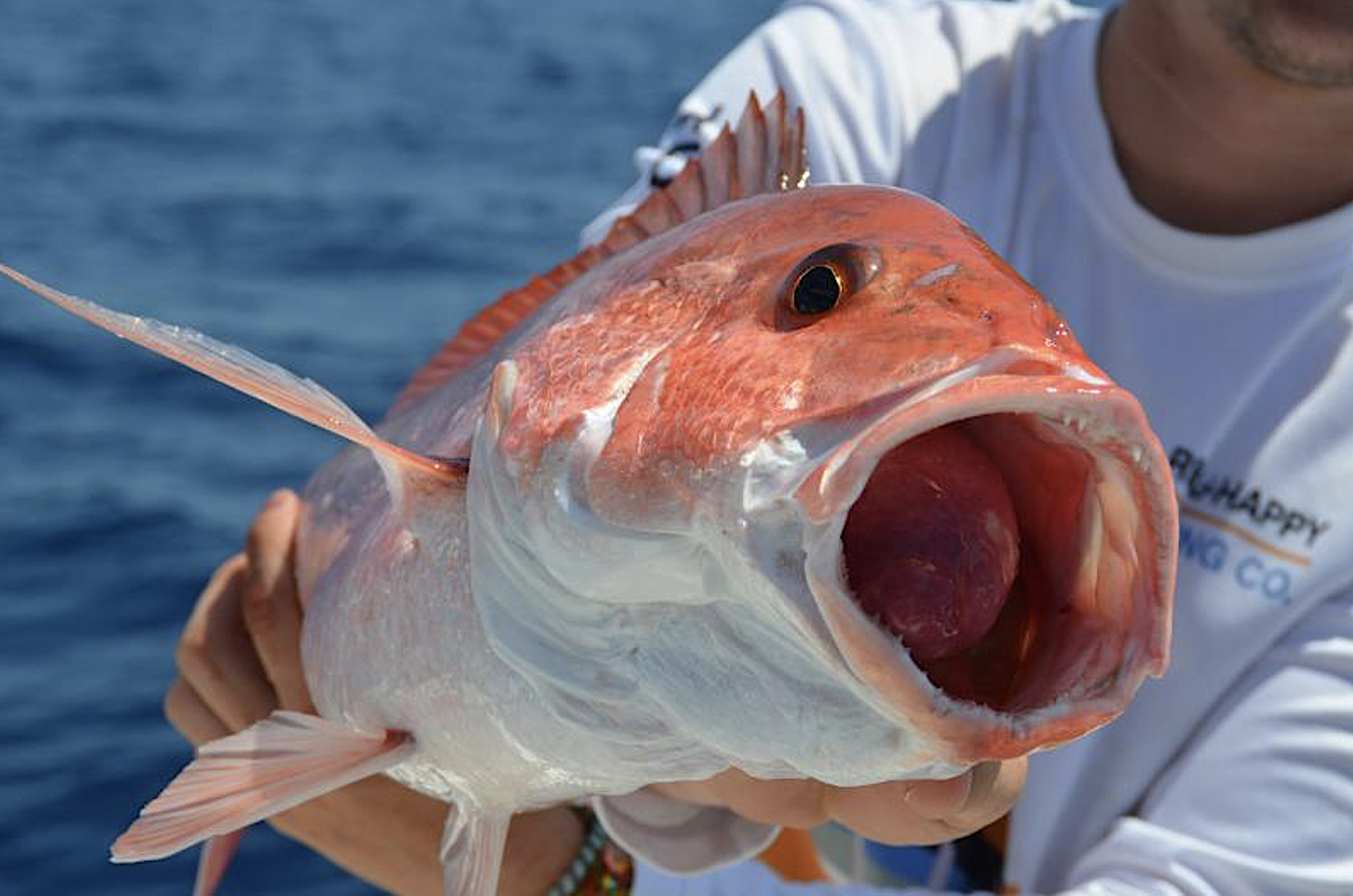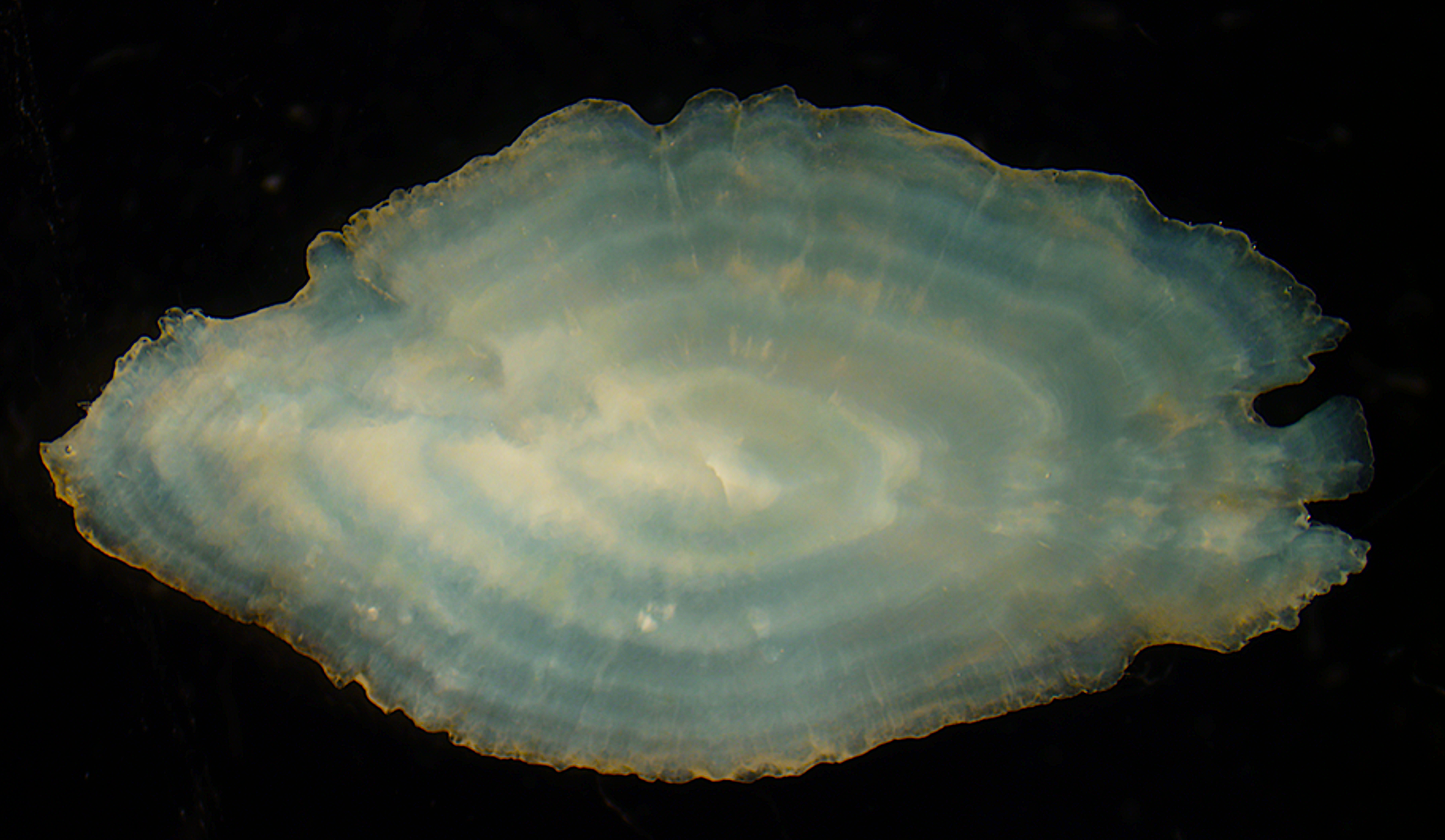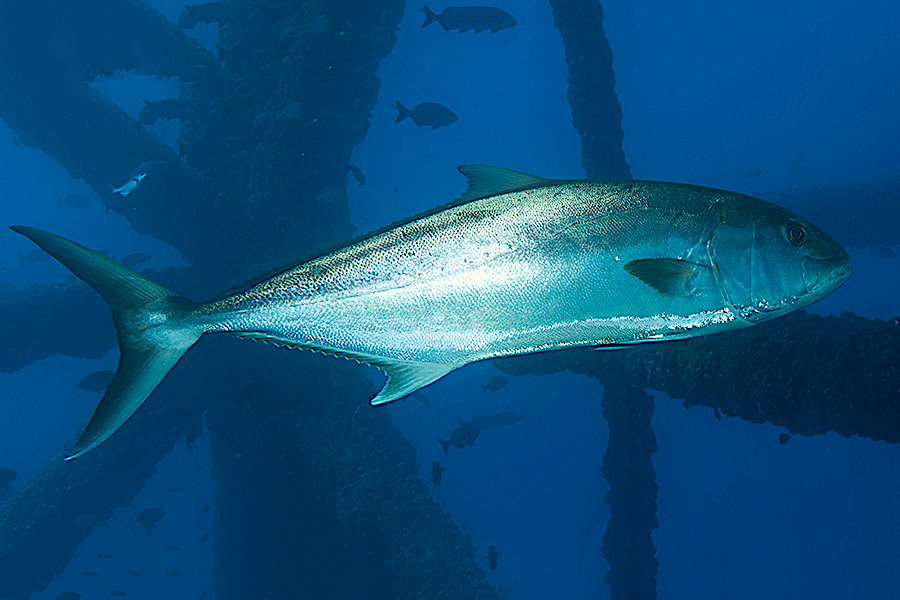Widespread misunderstandings may lead to unintentional harm.
Research Need
Catch and release of reef fish in recreational fisheries can help maintain healthy fish populations, allowing more fish to survive and reproduce.
However, reef fish caught in deeper waters may not survive catch and release because of pressure trauma from surfacing too quickly. Just as SCUBA divers must ascend slowly to avoid injury, fish reeled up too quickly from deep waters can suffer internal damage from rapid pressure changes.
Descending devices can help safely return fish back to their original depths. In the U.S. South Atlantic, anglers fishing for snapper and grouper species (a.k.a. reef fish) must keep on board a descending device and a 16-ounce or heavier weight, rigged and ready for use. Descending devices can be costly and time-consuming for anglers to use when returning fish.
One quick and cost-effective solution for mitigating pressure trauma before release is venting. Venting involves gently inserting a small needle into a fish that has suffered pressure-related injuries, allowing trapped gas to escape the fish’s body. When applied properly, venting is an effective technique and can improve the fish’s survival after release.
But do recreational anglers know about venting, and more importantly, do they know how to vent properly to give released fish a fighting chance?
What did they study?
Researchers from NC State University and The Nature Conservancy surveyed headboat recreational anglers in North Carolina from April 2023 to January 2025 to better understand their knowledge about venting.
The team first asked anglers if they knew about venting. If anglers answered “yes,” researchers showed them sketches of a red snapper displaying pressure trauma symptoms. Then, anglers marked where they believed they should vent the fish. Researchers asked follow-up questions to see if prior experience with venting or private boat fishing influenced their knowledge.
Researchers categorized the marked locations as “proper,” “likely proper,” or “improper.” The “proper” region (the solid black line on the figure below) is best for venting and includes the swim bladder, accessed from the fish’s side. The “likely proper” region (the dashed black line) is similarly effective for venting and includes the area between the pelvic fins and anus.
Venting any other area is ineffective and harmful to the fish.
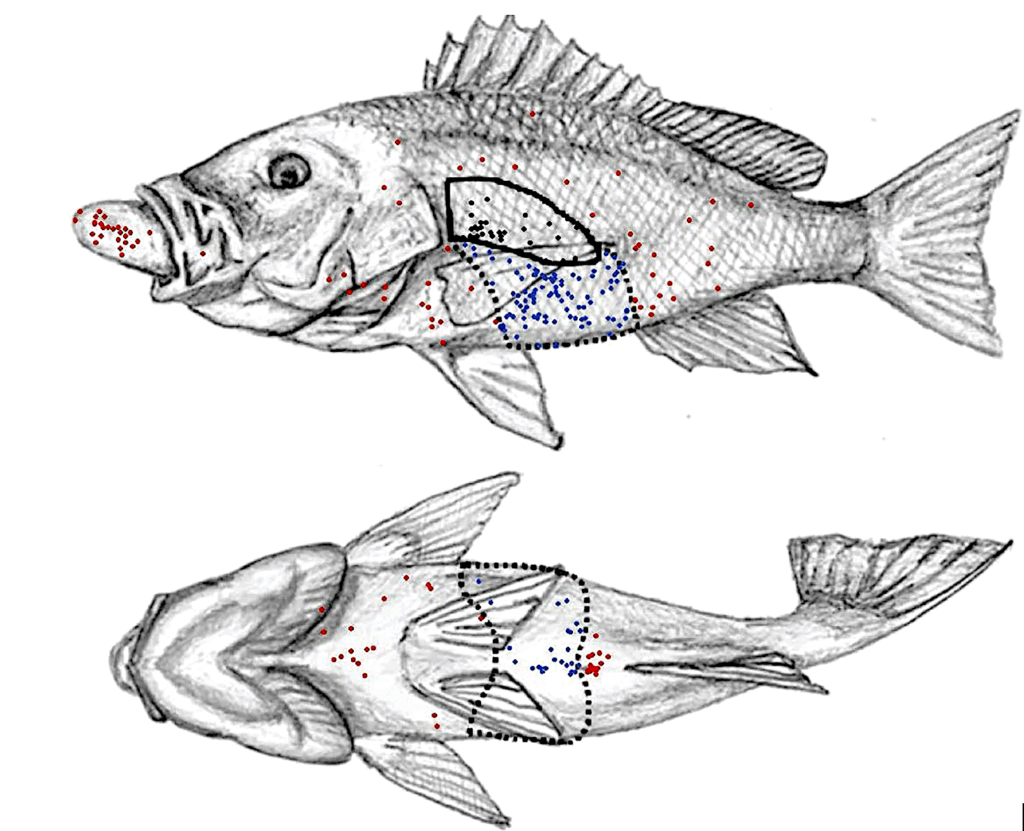
What did they find?
Researchers found that 59% of marine recreational headboat anglers had never before heard of venting.
Of the 41% that knew about venting, 60% chose either a proper region to vent (black dots on figure) or a likely proper region (blue dots). However, 40% of anglers who had heard of venting chose an improper region (red dots), such as an everted stomach (protruding from the mouth as a result of pressure trauma), the back muscles, or the anus.
What else did they find?
Prior experience with venting or private boat fishing did not affect an angler’s ability to identify the correct anatomical region for venting.
Notably, the research team conducted their surveys on a headboat, which typically hosts a large number of anglers (50+) on a large vessel with a captain and deckhands. Typically, a mix of both novice and experienced anglers, deckhands often handle and release fish for novice anglers, so some patrons may have limited personal incentive to learn about venting. As a result, the lack of knowledge about venting among headboat anglers in this study may not reflect the broader recreational fishing community.
So what?
This research suggests that simply knowing about venting isn’t enough; anglers must also know how to apply it correctly for it to truly benefit fish stocks.
The lack of knowledge about proper venting hinders efforts to reduce fish mortality. At fishing access sites like docks or headboat boarding areas, where current materials are insufficient, the research team sees an urgent need for more accessible education campaigns about alleviating pressure trauma.
Reading
Rudershausen, P. J., Sullivan, S. P., Runde, B. J., & Buckel, J. A. (2025). Recreational angler perceptions of the proper anatomical region to vent barotraumatized reef fish in the U.S. South Atlantic. North American Journal of Fisheries Management, vqaf032. https://doi.org/10.1093/najfmt/vqaf032
S. P. Sullivan received funding for this study from North Carolina State University’s Office of Undergraduate Research.
Lead photo credit: NOAA Fisheries, Florida Sea Grant, https://www.fisheries.noaa.gov/podcast/return-em-right-empowering-anglers-save-fish-barotrauma.
The text from Hook, Line & Science is available to reprint and republish at no cost, but only in its entirety and with this attribution: Hook, Line & Science, courtesy of Scott Baker and Sara Mirabilio, North Carolina Sea Grant.
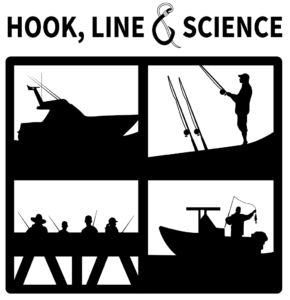
- Categories:

